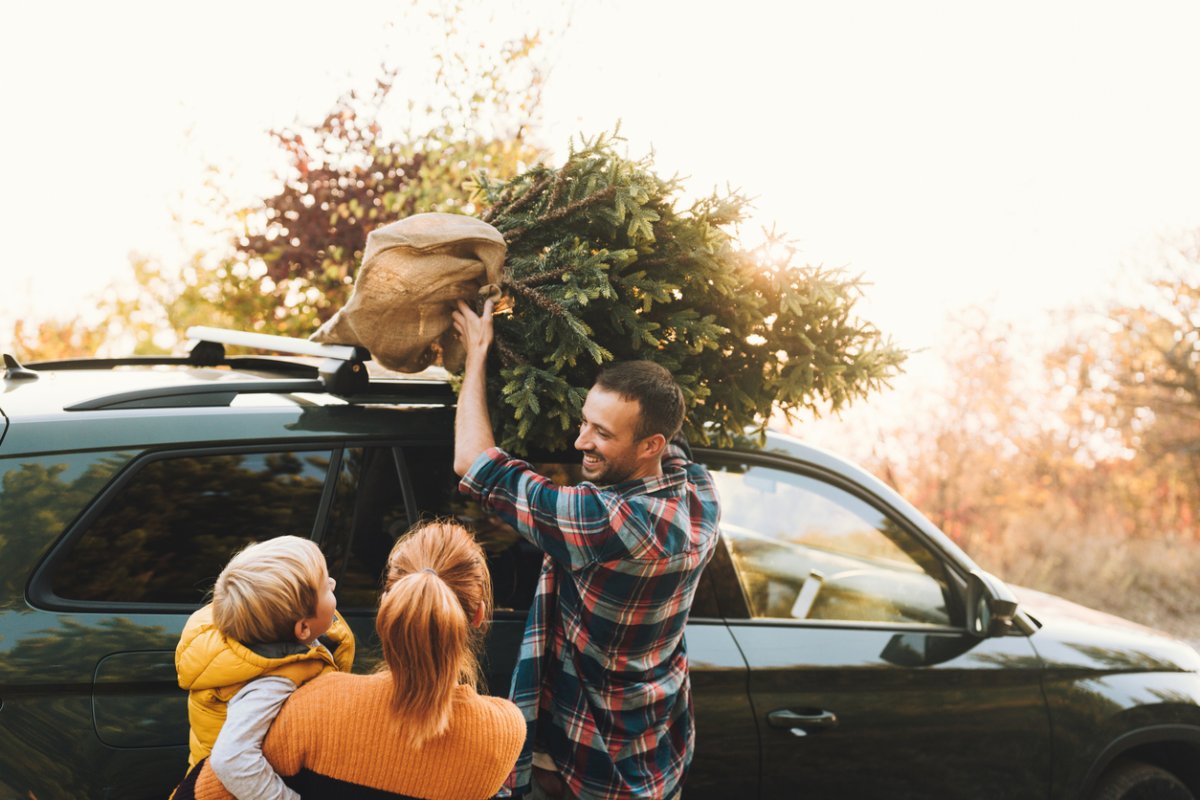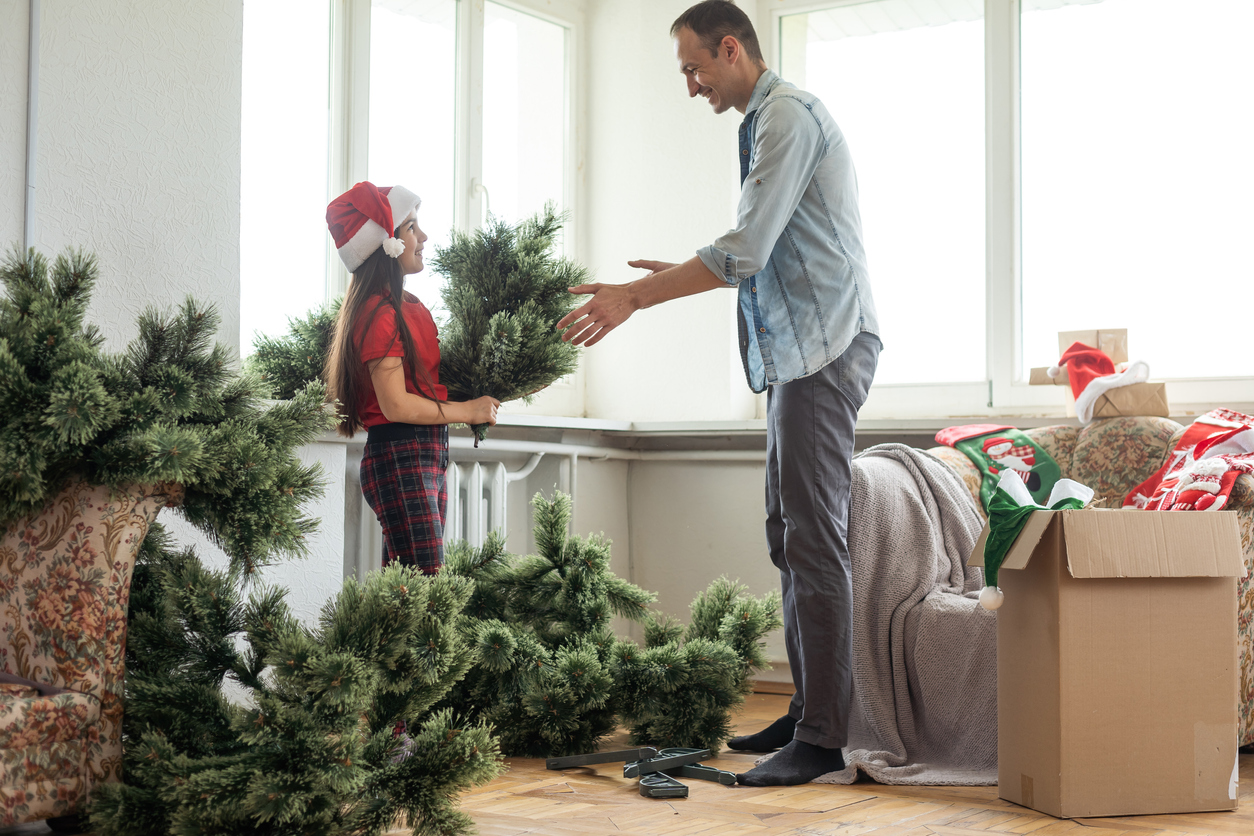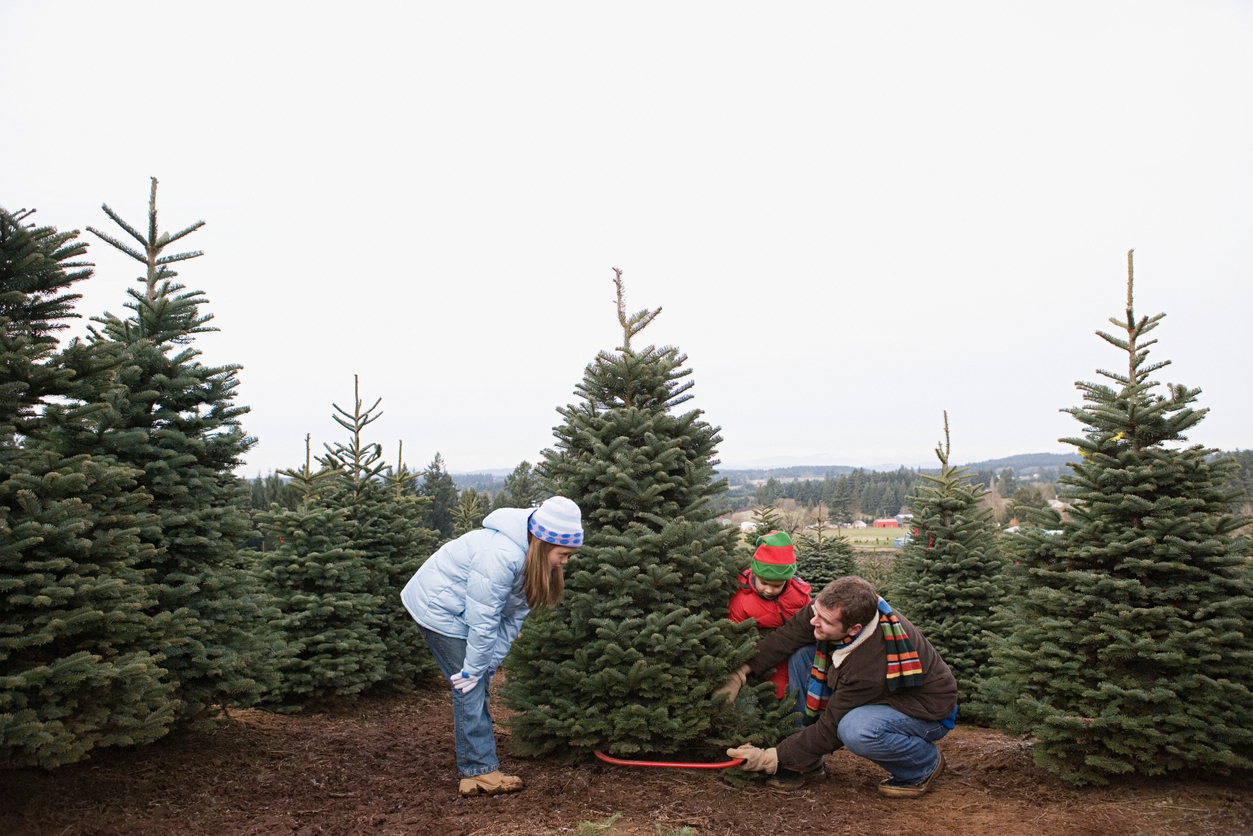

We may earn revenue from the products available on this page and participate in affiliate programs. Learn More ›
For many families, the annual rite of selecting a Christmas tree is a fun tradition, but not one to be taken lightly. Some folks have a list of criteria that are important to them. Some people just want a tree that looks good. “Most people have a favorite kind of tree based on aesthetics,” says Don Tapio, owner of Christmas Valley Tree Farm in Rochester, Washington. “They just want the tree that is most appealing to them.”
The most appealing tree might be perfect for the holiday spirit, but not for the space it will decorate. What’s the right tree for your home? Ask yourself these four questions.
1. How much space do you have?

Before you visit a tree farm or local Christmas tree lot, be sure to measure the room in which you plan to put your tree. It’s important to consider “proportion and scale when choosing a tree,” says Georgina Ross, a certified interior designer in Chelmsford, England. “A tree should “complement the room’s dimensions without overwhelming it.”
Start by measuring the height of your ceiling. “For ceiling height, a good rule of thumb is to choose a tree that is at least 1 foot shorter than the ceiling height,” Ross says. “This allows ample room for a tree topper and ensures the tree doesn’t appear crammed into the space. For example, with an 8-foot ceiling, a 7-foot tree would be ideal.” If your tree stand is extra deep, take that into consideration, as well.
Next, focus your attention on the width of the space. “When considering the width of the space, it’s essential to balance the tree’s presence with the room’s traffic flow,” says Ross. “A wide tree can be a grand statement in a spacious room, but in a more compact area, a slim or pencil tree might be more appropriate.”
If your space is limited and you need to squeeze a tree into a corner, choose a narrower tree. Be aware that outside at the tree farm, a tree might not look as big as it truly is. Having your tree baled in netting at the tree farm or lot will make it much easier to transport.
Give some thought, too, as to how you’ll get your tree home—can you really fit a 12-foot tree on top of your MINI Cooper? Will the tree you have in mind fit in your building’s elevator, or make the turns in the stairwell? Lacking transportation or the physical heartiness to get an 8-foot live tree up a couple flights of stairs will help you narrow your options.
RELATED: How Long Does a Christmas Tree Last?
2. Live tree, or artificial tree?

The choice between live and artificial trees “is a matter of personal preference and practicality,” says Ross. “Live trees bring a traditional feel and a delightful scent, but they require more maintenance and can be less predictable in shape.” There’s also the time-honored custom of picking one out, and the pure authenticity of having a real Christmas tree is important to some people.
On the other hand, “Artificial trees offer convenience and uniformity, and can be a one-time investment used for several years,” says Ross. “They also come in various sizes and shapes to fit any space perfectly.” Artificial trees can be easier to set up and most include the Christmas lights pre-strung; just plug the tree in. A faux tree might be the best option for families in which allergies are an issue.
When it comes to choosing which artificial tree to purchase, consider the details. The right needle tips, for example, make for a more realistic-looking artificial tree. High-quality trees have hand-painted molded tips and a brown stem; others will have shredded tips and can be completely green. Examine the density of the branches—you don’t want to be able to see the pole when the tree has been properly fluffed out. Finally, get one made mostly from polyethylene, and a design that resembles an actual tree species, not just taking the name of one. (And if you’re searching, start with our guide to the best artificial Christmas trees, assembled from multiple seasons of testing by our editors and writers.)
Real vs. Artificial Christmas Trees: A Comparison
| Real | Artificial | |
| Expense | Cheaper per each, but is an annual cost. May have to tip tree farm personnel. | Expensive initial outlay, but many years of use |
| Selection, size, shape | Might be limited in range or by geographical region | The ability to order online means the selection is virtually limitless |
| Ease of transport | Can be cumbersome | Usually comes tightly packed in a box |
| Setup | Saw off bottom of trunk, wrangle into stand, string lights, keep water supply full | Connect tree sections together, insert into stand |
| Longevity | One season | 8 to 10 years |
| Ease of decoration | Must be strung and decorated by hand | May come prelit or pre-decorated |
3. If a live Christmas tree, which species?

Once you know how tall a tree you need for your space, the other big question live tree shoppers need to answer is which species best meets their requirements: Is fragrance more important than needle color? Will you be hanging heavy ornaments on the branches? Here’s what to think about before you hit the tree lot.
- The Colorado Blue Spruce is so named for the bluish color of its needles. It is often sold as a living tree, which can be planted outside after the holidays. It has a nice pyramid shape with strong branches that can hold heavy ornaments, though its needles are sharp.
- The Douglas fir is one of the most common Christmas tree types sold in the United States, especially in the West. It has soft, shiny needles, grows symmetrically and is particularly full. But if the branches have been sheared, it can become too full (and difficult to decorate). For the sweet aroma alone, this evergreen is worth considering.
- The balsam fir has 2-toned needles that are dark green on top and silver underneath. Its symmetrical shape and evergreen smell make it a wonderful Christmas tree. It’s fairly long lasting, and a good bet for those who like to put their trees up in late November. Downside: Its branches are flexible and don’t hold heavy ornaments well.
- The Fraser fir is known for its intoxicating scent. It holds its needles well, even after cutting (assuming it’s watered well). The needles are a silvery-green color, about 1 inch long, and softer than those of many other evergreens. Its sturdy branches are able to hold heavier ornaments.
- The Scots (Scotch) pine holds its needles even after the tree dries out. The needles are sharp, though, so beware while decorating. If the tree has been sheared for shaping, the branches may be very close together, making it difficult to decorate. Its branches are sturdy and suitable for ornaments of all weights and sizes.
…And what about a tree stand?

Some artificial trees come with a stand, in which case your tree shopping is done and you’re golden. If you need to purchase a Christmas tree stand for an artificial tree, however, look for one designed specifically for fake trees, which typically have a thinner “trunk” than a real tree. A standard tree stand might not be able to tighten enough to securely hold an artificial tree.
For real trees, also give some thought to the stand you use. Look for stands that are rated specifically to securely hold the height of the tree you have. If you have pets or young children in the home, consider one with a wide base that’s less likely to topple over. Seek out a stand that can hold a good quantity of water too, says Tapio. “Avoid small stands and check the water level frequently to make sure it does not drop below the base of the tree,” he says.
Before putting a Christmas tree in its stand, give it a final shake to dislodge any loose needles and then saw off an inch or so off the tree’s trunk so that the fresh cut can take up water efficiently.
